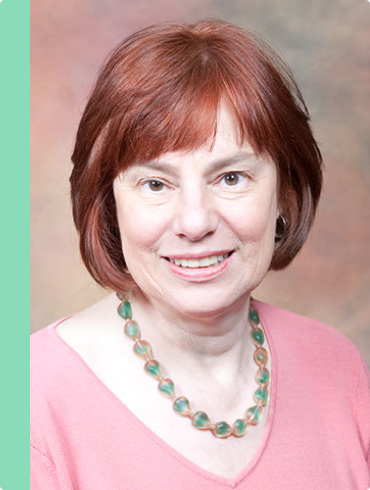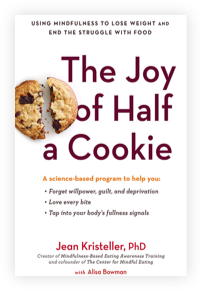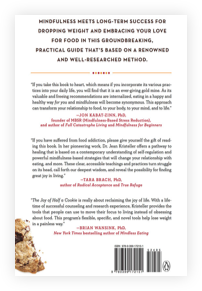ABOUT MINDFUL EATING & MB-EAT
Core Concepts

We all eat – and we all eat mindlessly at times. We might be in a hurry, socializing, or eating everything on our plate just because it’s there. Or we might be eating to handle stress, gobbling down a favorite ‘comfort’ food, but not even really tasting it after the first few bites. Mindfulness helps connect the mind and the body, to slow down for a moment, connect with ourselves, and move from reacting to responding.
[Spirituality & Health article link]
Mindfulness can help bring balance into every aspect of how we eat. It involves cultivating a combination of “inner wisdom” (awareness of how our body and mind are responding), and “outer wisdom” (engaging nutrition information and recommendations to meet your own personal needs and preferences).
[Mindful article link]
Mindful eating involves tuning into your own natural physical hunger signals. What are they? How strong are they in the moment? How do you know? Or perhaps you’re confusing physical hunger with an impulse to eat because the food is there, or because you’re bored or anxious about something.
Mindful eating involves really tasting your food. Our taste buds start to get tired after only a few bites. Why keep eating if you’re not really enjoying the food as much? So it involves connecting with your “inner gourmet”. (But note – if you need to eat past that point of optimal pleasure because that’s all you have for lunch, that’s fine!)
Mindful eating involves learning to know when you’ve had enough. Become mindful of when your stomach is full at just the right level – that may be less if you’re about to go exercise, or more at a family celebration. And learn to tune into ‘body satiety’ – that feedback from your body that it’s taking in enough nutrients, but this may take some time while food is being digested, so it’s not as useful for knowing when to stop eating.


Mindful eating involves choosing foods wisely, both for satisfaction and for health. Let go of the “food police” mentality, and instead engage gentle self-acceptance. You might find that a small amount of gourmet chocolate is far more satisfying than a larger amount of that candy bar you sometimes grab at the grocery store. You may find that one box of cereal calls you more loudly than another. Or one type of sandwich at the deli. Or an entrée on the menu. Balance that with any health needs for your body. Tune in mindfully – you’ll probably be more satisfied.
Mindful eating involves cultivating your “outer” wisdom about the nutritional and ‘energy’ value (aka ‘calories’) that of foods you regularly eat (and in the amounts you prefer). Instead of being afraid and anxious about checking on ‘calories’, cultivate a self-accepting curiousity.You might be surprised – foods you thought of as ‘fattening’ may be fine in small amounts, whereas some of those ‘healthier’ foods may add up quickly – like the bowl of granola, or that small bag of trail mix which actually contains “3 servings”. If you learn to fully ‘savor’ all foods, you may be surprised at how much easier it is to create a healthy yet satisfying balance!
Mindful eating involves knowing how to be more mindful. We all have a capacity to be mindful, but mindfulness meditation is one of the most powerful ways to develop that capacity further and exercise it as fully as possible. Find a way to learn the basics of mindfulness meditation – and practice it as a way to give yourself balance and wisdom.
History of Mindfulness-Based Eating Awareness Training (MB-EAT):
Overview. MB-EAT was developed over a number of years through work with a wide range of individuals, supported by funding from the National Institutes of Health (see MB-EAT Research section below for more detail). These individuals include both men and women, at varying weight levels, from normal weight to severely obese, and ages, from 18 to 89. She I and her my colleagues have worked with people individually and in groups of varying sizes. Individuals have enrolled in treatment for various reasons: for help with compulsive eating; binge eating disorder; to lose weight; to maintain weight loss; and/or to simply improve their relationship with food and themselves. Although individuals may present with somewhat diverse issues, there are more commonalities than differences in how individuals’ relationships to food and to their bodies have become distorted and dysfunctional.
Dr. Kristeller first began developing elements of MB-EAT while working with clients during her clinical training at Yale University. Drawing on the cutting edge research being conducted there by Dr. Judith Rodin on how sensitivity to external factors can override internal hunger and satiety cues; by Dr. Bartoshuk on taste awareness and taste satiety; and by Dr. Gary Schwartz on interoceptive awareness and self-regulation, she began to consider how this work could inform a different approach to eating and weight issues. She began developing ways to help people tune into their experiences of hunger, taste, and fullness, rather than ignoring these important feedback messages, linking this with a number of other elements informed by her training in cognitive-behavioral psychology.
Her first experience pulling these elements together into a group format was with young women at the Brown University Counseling Service in 1981. Over the next few years this developed into an early version of MB-EAT, while on staff at the Univ. of Mass. Medical Center. Leaving there for a position in the doctoral program at Indiana State University, the program has evolved into the full 12-session MB-EAT program over the course of multiple research studies and NIH-funded grants, while collaborating with many valued students and colleagues.
MB-EAT Research:
Overview: We began research on an early version of MB-EAT in the mid-1990s, exploring the value of the program for women with significant obesity and with binge eating disorder. The results of that study (Kristeller & Hallett, 1999) showed that using the eating-related mindfulnesses practices highly predicted success with reducing out-of-control eating, and also improved overall mood. Based on those results, we received our first funding from the National Institutes of Health, with Ruth Wolever at Duke University. We conducted a much larger study comparing MB-EAT to a more standard psycho-educational program and to a ‘wait-list’ control group (Kristeller, Wolever & Sheets, 2013). The MB-EAT group did as well or better on all of the measures; we were particularly pleased to find that even for those individuals still occasionally reported a binge, that they were much smaller in size. We also found that the amount of mindfulness practice predicted weight change, in addition to other key effects. These results took us to our next NIH-funded study, in which we expanded the participants to include individuals who were struggling as much with weight, but did not necessarily have binge eating disorder. We also added more “outer wisdom” components, and founded similar or stronger results to the previous research, for both those with and without BED. Other research has now been completed exploring variations of MB-EAT for individuals with type II diabetes, with a wider range of weight issues and less extreme issues with overeating, and for adolescents with eating and weight concerns. Scroll down for more details!
Research on MB-EAT began in the mid-1990s as part of Brendan Hallett’s doctoral dissertation at ISU (Kristeller & Hallett, 1999). Drawing on the program as it had been developed at the Univ. of Massachusetts Medical School, several components were added: a Forgiveness meditation, focused both on self-acceptance and forgiving others; and a Wisdom meditation to help people engage a higher/spiritual self. This study used a simple extended-baseline/extended-followup design, in which everyone acted as their own ‘control’ as it wasn’t clear how consistent the effects of the intervention would be.
This first study included women (a total of 18) who were struggling with binge eating disorder; most of them were older (average age of 46; age range from 25 – 62) and quite heavy (average weight of 239 lbs., BMI = 40). None had previous meditation experience. The program consisted of 7- 8 sessions, introducing a range of meditation practices, including sitting breath awareness meditation, ‘mini-meditations’ and mindful eating meditations, along with multiple mindful eating exercises. These moved from easier to more challenging foods, including raisins, snack foods, chocolate, and a pot-luck meal. See Kristeller & Hallett (1999) for a fuller description of the intervention. Treatment effects were, however, consistent enough to assess effects across all participants. During the several-week baseline period, measures of binges/week (at 4.02/week), depression, and eating issues were stable; these all improved significantly during the course of the program and remained improved during the six-week followup period. As important, the degree of improvement on these variables was highly related to the degree to which women reported using the eating-related meditation practices. The limitations of this study were, of course, the small numbers of women enrolled and the lack of a randomized control group. Nevertheless, this study demonstrated not only the value of the treatment program, but also the acceptability of it among individuals who had no previous interest in meditation practice.
Based on these results, the first research funding was obtained from the National Institutes of Health, through the National Center for Complementary and Alternative Medicine (NCCAM), jointly with Duke University, with Ruth Q. Wolever, Ph.D., who became the primary collaborator there. The study used a 3-arm randomized clinical trial, that enrolled a similar group of individuals in regard to age and weight, and binge eating disorder, but with more diverse backgrounds, including men (Kristeller, Wolever & Sheets, 2013).
The intervention increased to 9 sessions, plus 3 follow-up sessions, adding some additional information regarding nutritional health and exercise, to balance the content better with the comparison group treatment, which was drawn primarily from cognitive-behavioral and educational components of the Duke Diet and Fitness Center’s Weight Loss program. More mindful exercise was integrated into the program as were some additional guided meditations. Furthermore, both program focused on improvement in eating patterns, rather than on weight loss per se.
On almost every measure, the MB-EAT group showed greater or comparable effects to the comparison standard treatment, with notably greater improvement on decreases in frequency and size of binge eating episodes. Neither group, however, lost weight overall, on average. But in the MB-EAT group, improvement on a number of variables was predicted by the amount of mindfulness practice, and those who practiced mindfulness more, also showed greater weight loss.
Based on these results, further NIH grant funds were obtained, supporting parallel studies at Duke University and Indiana State University, again broadening the focus of the program in several ways. At ISU, the focus remained on individuals with more severe concerns related to eating and weight. One question was whether the program, designed for individuals with binge eating disorder, would also benefit individuals without that level of eating problems, but with similar weight issues. Another was whether adding more elements focused on cultivating “outer wisdom” and weight loss would be successful – or would perhaps intimidate participants or leave them feeling more anxious.
The new MB-EAT program now consisted of 10 core sessions, somewhat longer in length to include the new material, with two followup sessions. About 30% of participants had binge eating disorder, and all had weights at or above a BMI of 35 (moderate obesity). The new material added included a number of “outer wisdom” elements created for the program, most notably the “500 Calorie Challenge©”. Rather than introducing a restrictive diet program of 1200 or 1400 calories, the 500 Calorie Challenge© asks everyone to find about 500 calories in their usual daily food intake to consider cutting out – permanently. The idea was to challenge participants to make a meaningful change in their eating habits to lead to weight loss, but one that was sustainable. This may still seem like a lot, but spread over 3 meals and 2 snacks, it is only 100 calories at a time; or perhaps taking out three sodas during the day; or fewer second helpings. More nutrition guidance and exercise elements were also added, again from a mindfulness perspective.
The results to date are encouraging. Individuals with and without binge eating disorder showed almost identical improvement, and weight loss in the new program was far more consistent, with no one gaining any meaningful weight, and some individuals losing as much as 25 lbs. — and keeping it off, or continuing to lose even more. All the indicators of disruptive eating and struggling with food improved as much or more so as in the earlier studies. And results, when published, will be consistent with the value of adding these components into the MB-EAT program (Kristeller & Wolever, 2011).
Other NIH-funded research is also underway or completed. The MB-EAT program has been adapted for treatment of type-2 diabetes in collaboration with Ohio State University (Miller, Kristeller, Headings et al., 2012; 2014) and to a wider range of individuals with weight issues at the University of California-San Francisco (Daubenmier et al., 2011; Kristeller & Epel, 2014). Exploratory research has also found value for using elements of the program focusing on restaurant meals (Timmerman & Brown, 2012), and for adolescents and children with eating and weight problems.
Read More


